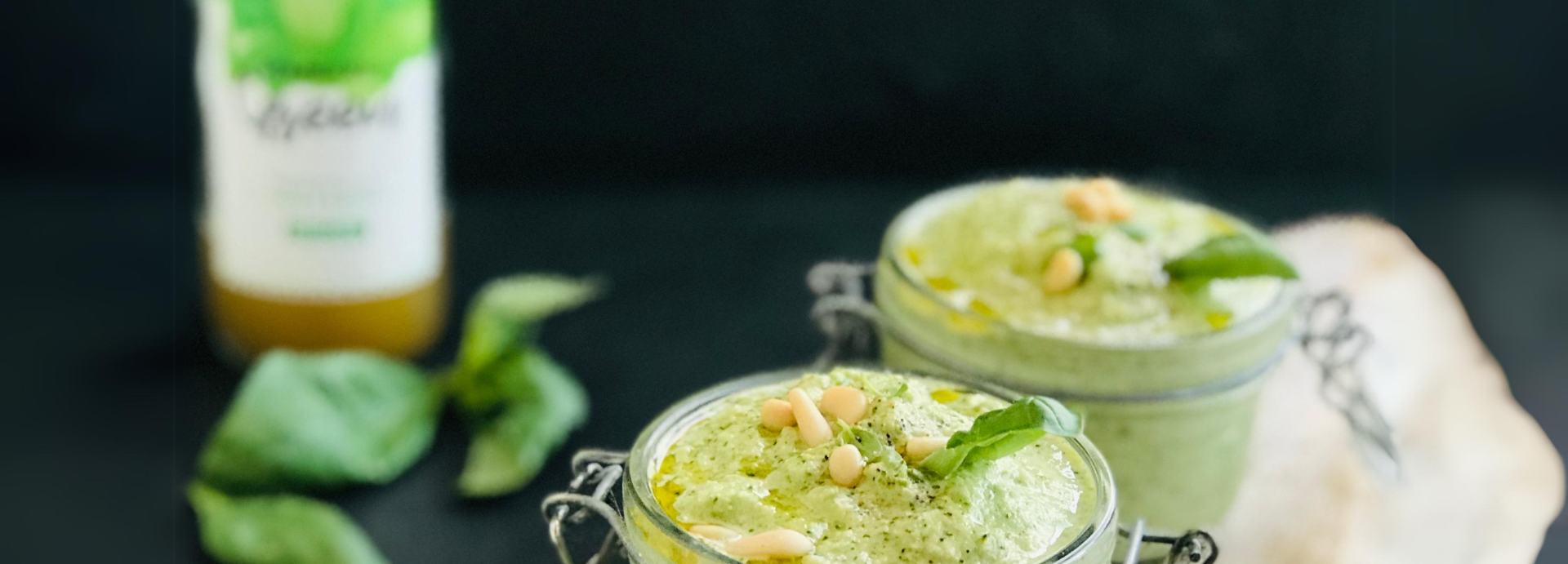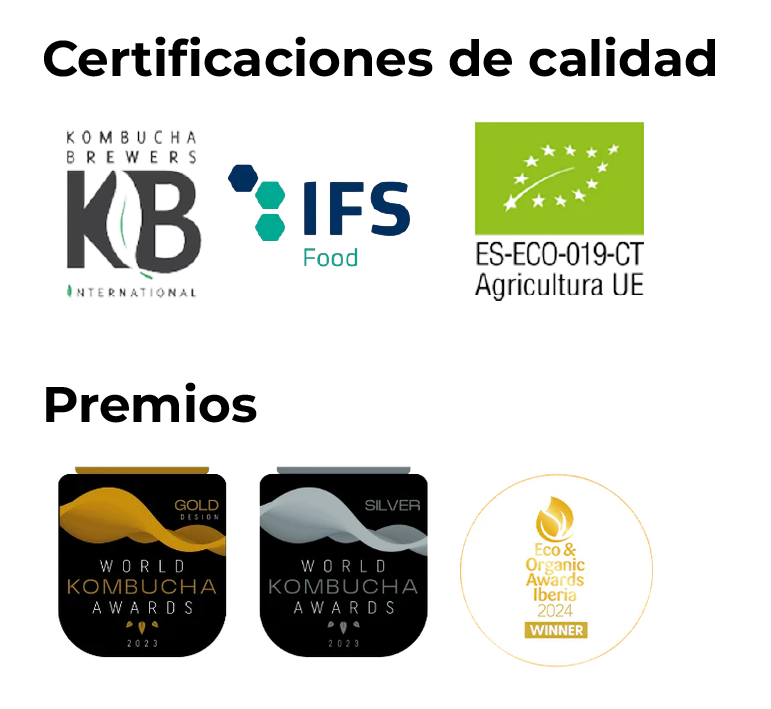La versatilidad de kombucha hace posible su aplicación en cocina. Si bien es un ingrediente ideal para preparar salsas o platos fríos, también es un sustituto perfecto en primeros platos, como sustituta del vino o la cerveza, por ejemplo. Últimamente, estamos publicando muchas recetas en las que utilizamos kombucha para cocinar: unos mejillones a la marinera, unas albóndigas suecas… Y la pregunta que nos hacéis más a menudo es ¿y no se pierde el efecto probiótico al calentar la kombucha?
La respuesta breve es SÍ, pero eso no tiene por qué ser malo del todo. Aquí es donde aparecen los probióticos zombis, es decir, los probióticos muertos. Y aunque su nombre no sea nada atractivo, tenemos una buena noticia que daros: son igual de beneficiosos para el organismo.
Todos sabemos que consumir probióticos, o alimentos ricos en probióticos, ayuda a mantener en buenas condiciones nuestra microbiota. De hecho, ¡es uno de nuestros trucos preferidos! Son fáciles de incorporar a tu día a día y están presentes en muchos más alimentos de los que crees. No solo son yogur, kéfir o chucrut. También incluyen el queso crudo, los encurtidos, las aceitunas, el vinagre de manzana, el kimchi, pero también nuestra querida kombucha. Todos, por supuesto, sin pasteurizar.
El potencial de los efectos beneficiosos de los probióticos muertos y sus metabolitos comenzó a ser reconocido, en cierta medida, a principios de los años 80. Fue entonces cuando se empezaron a publicar estudios sobre una cepa de Lactobacillus acidophilus derivada del intestino humano y muerta por calor, demostrando su efecto pronunciado en el tratamiento de una variedad de problemas digestivos. Pero no fue hasta hace aproximadamente una década cuando se hizo suficiente investigación para que los científicos reconocieran que las células muertas liberadas de ciertas especies de bacterias después de ser inactivadas por el tratamiento térmico secretaban componentes bacterianos. Según se comprobó, éstos poseían efectos inmunomoduladores beneficiosos y acciones antagonistas contra patógenos. Este trabajo permaneció prácticamente inadvertido hasta que en 2015, Nestlé publicó su investigación en el Journal of Allergy and Clinical Immunology sobre este tema, y NutraIngredients se hizo eco del tema con su resumen titulado «¿Trabajando muertos? Los científicos de Nestlé descubren que los probióticos zombis tratados con calor pueden aumentar la inmunidad más allá de la tumba».
Probiotics: looking for them alive or dead
Over the past five years, research into the benefits of these elusive "unprobiotics" (by definition, probiotics are live) has increased rapidly as scientists try to understand how they differ in performance from their living counterparts.
The bacteria that have been most extensively studied for their human health benefits and are most commonly found in probiotic products are derived from Lactobacillus and Bifidobacteria species, both inherently abundant in the human gastrointestinal tract. Research has shown that these probiotics work by producing antimicrobial compounds and lactic acid , as well as through competition with pathogens for attachment and colonization, nutrients, and other growth factors. Probiotic bacteria have also been shown to have immunomodulatory properties and can regulate inflammation in the gut and systemically.
However, there are disadvantages to using live bacteria . It seems that, perhaps, bacteria that function from "beyond the grave" can overcome most, if not all, of the disadvantages of live bacteria, since they retain - and in some cases improve - some of the good characteristics of living bacteria. their living forms. For example, there is a small risk that the live bacteria in probiotics will be absorbed through the intestinal wall into the bloodstream, especially in newborns and vulnerable subjects, whose intestinal mucosal layer may not function as an adequate barrier. Heat-killed bacteria, however, do not pose this risk. There is also no risk of acquiring or transferring antibiotic-resistant genes, and in newborns there is no risk of interfering with normal colonization of the gut microbiota. Stability , a common concern with live bacteria, is another advantage of non-living bacteria, both in stability and stability through the harsh environment of the gastrointestinal tract.
And although live spore-forming bacteria are much more stable than non-spore-forming bacteria, they can present a cleaning challenge for manufacturers.
After pasteurization, are probiotics really dead?
There are several ways to inactivate probiotic bacteria. The most common is heat treatment: pasteurization in which high temperatures, up to 100° C, are used.
So, yes, the bacteria are really dead; But like our favorite movie zombie, they have abilities beyond the reach of their living forms. Breakdown of cell walls releases cell contents such as DNA and cell wall components such as peptidoglycans and lipoteichoic acids, which are known to exert immunomodulatory effects .
Are zombie probiotics good?
There is still much to learn about how heat-killed bacteria exert their effects on the human body. It is thought that one of the main ways these bacterial fragments may work is through their effects on the mucosal lining of the intestine. Most of our indigenous gut bacteria are found in the lumen of the colon. They are separated from the epithelial layer of the intestine (the barrier) by dual mucosal layers. Although the bacteria themselves remain within the intestinal lumen, they release metabolites that can pass through the mucosa and exert an anti-inflammatory effect on the epithelial layer.
Probiotic bacteria work in a similar way. If the mucosal layer is damaged, both metabolites and probiotic bacteria can reach the epithelial layer for a more direct effect, although this also increases the risk that live bacteria can pass through the layer and into the systemic circulation. Introducing probiotic bacteria products without the live bacteria themselves provides a direct source of these anti-inflammatory and immunomodulatory products, without the potential risk that live bacteria present .
Most of the research on heat-killed probiotic bacteria has focused on digestive health, and they have been shown to be beneficial in a wide variety of digestive challenges, such as bloating , common infant colic , and diarrhea . More recently, research has expanded to include the management of some skin conditions (e.g. atopic dermatitis ) that are caused by gastrointestinal dysbiosis. Additionally, they may have benefits in more diverse areas, such as stress and anxiety management .
Is zombie probiotics the best name for these dead probiotics?
“ Zombie probiotics ” may not be the best nomenclature to refer to these beneficial remnants of a probiotic life, especially if you imagine visions of decaying human flesh when taken as supplements. As a result, current terminology tends to use postbiotic or parabiotic as more acceptable ways to identify them. But regardless of the name, let's hope they have a long "life" within the world of living dietary supplements.
Entonces ¿es bueno cocinar con kombucha?
¡Por supuesto que es bueno cocinar con kombucha! Aunque la kombucha pierde su efecto probiótico al ser calentada, los probióticos muertos, o «zombis», tienen efectos beneficiosos en la salud y el bienestar. Los estudios han demostrado que los probióticos muertos pueden tener efectos inmunomoduladores beneficiosos y acciones antagonistas contra patógenos, y no representan los riesgos que presentan los probióticos vivos.
Además, los ácidos orgánicos son uno de los componentes clave de la kombucha y son responsables de gran parte de su sabor distintivo y beneficios para la salud. Los ácidos orgánicos comunes en la kombucha incluyen ácido acético, ácido láctico, ácido glucurónico y ácido butírico. Uno de los beneficios de los ácidos orgánicos en la kombucha es que son resistentes al calor, lo que significa que no se descomponen cuando se calienta la bebida. Esto significa que puedes usar la kombucha como un ingrediente en recetas de cocina sin perder sus propiedades nutricionales y de sabor.
Algunas recetas populares que incluyen la kombucha como ingrediente incluyen aderezos para ensaladas, marinadas para carnes y salsas para guisos. Al agregar kombucha a tus recetas, puedes agregar un sabor único y complejo a tus platos, así como también obtener algunos de los beneficios para la salud que se asocian con esta bebida fermentada.
En resumen…
Si utilizas kombucha en la cocina, el calor matará a los probióticos, pero mantendrá intactos los ácidos orgánicos. Además, estudios recientes apuntan que los probióticos muertos continuan teniendo beneficios. Así, la kombucha es una alternativa a aquellos platos que tradicionalmente se condimentan con vino o vinagre.






